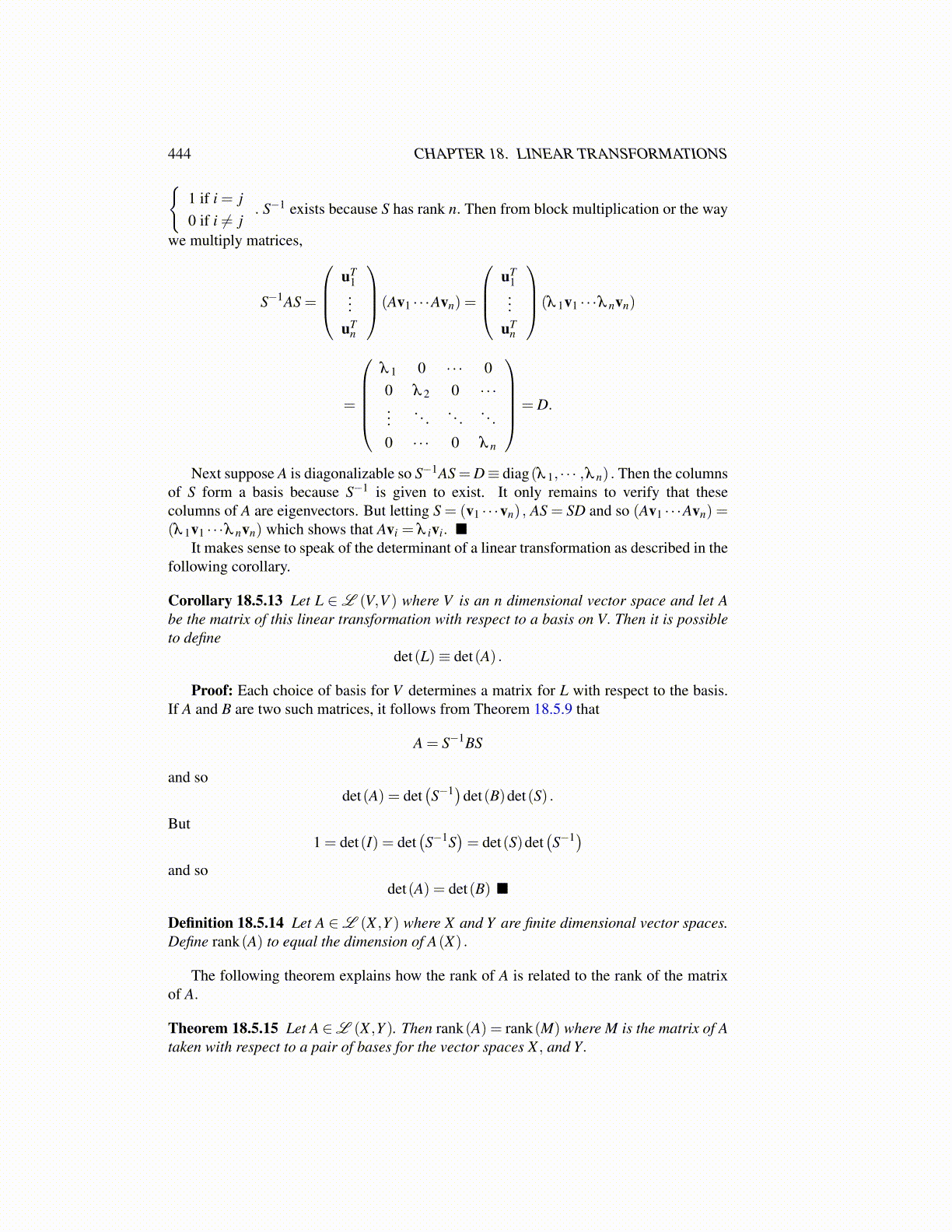
444 CHAPTER 18. LINEAR TRANSFORMATIONS{1 if i = j0 if i ̸= j
. S−1 exists because S has rank n. Then from block multiplication or the way
we multiply matrices,
S−1AS =
uT
1...
uTn
(Av1 · · ·Avn) =
uT
1...
uTn
(λ 1v1 · · ·λ nvn)
=
λ 1 0 · · · 00 λ 2 0 · · ·...
. . . . . . . . .
0 · · · 0 λ n
= D.
Next suppose A is diagonalizable so S−1AS = D≡ diag(λ 1, · · · ,λ n) . Then the columnsof S form a basis because S−1 is given to exist. It only remains to verify that thesecolumns of A are eigenvectors. But letting S = (v1 · · ·vn) , AS = SD and so (Av1 · · ·Avn) =(λ 1v1 · · ·λ nvn) which shows that Avi = λ ivi. ■
It makes sense to speak of the determinant of a linear transformation as described in thefollowing corollary.
Corollary 18.5.13 Let L ∈L (V,V ) where V is an n dimensional vector space and let Abe the matrix of this linear transformation with respect to a basis on V. Then it is possibleto define
det(L)≡ det(A) .
Proof: Each choice of basis for V determines a matrix for L with respect to the basis.If A and B are two such matrices, it follows from Theorem 18.5.9 that
A = S−1BS
and sodet(A) = det
(S−1)det(B)det(S) .
But1 = det(I) = det
(S−1S
)= det(S)det
(S−1)
and sodet(A) = det(B) ■
Definition 18.5.14 Let A ∈L (X ,Y ) where X and Y are finite dimensional vector spaces.Define rank(A) to equal the dimension of A(X) .
The following theorem explains how the rank of A is related to the rank of the matrixof A.
Theorem 18.5.15 Let A ∈L (X ,Y ). Then rank(A) = rank(M) where M is the matrix of Ataken with respect to a pair of bases for the vector spaces X , and Y.